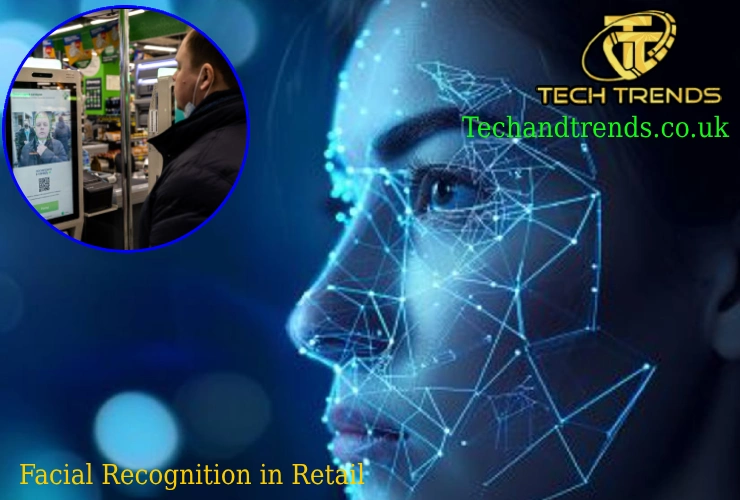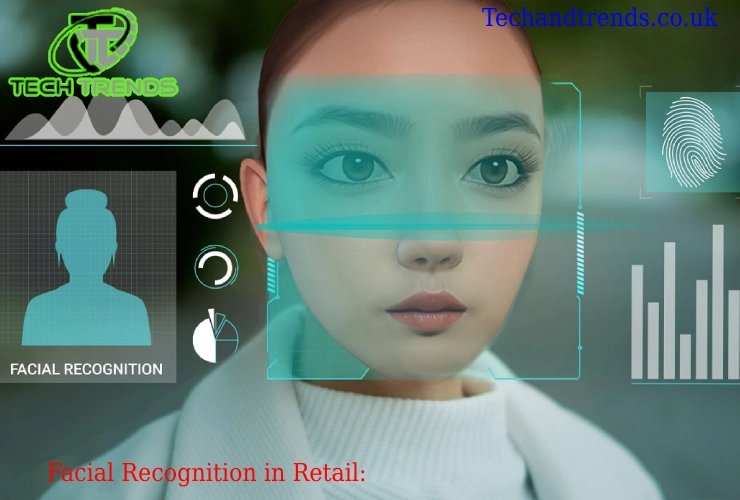Facial Recognition in Retail is transforming the shopping experience by enhancing customer engagement and security. This technology uses AI to personalize interactions, streamline checkouts, and deter theft. By integrating facial recognition with retail security and marketing insights, businesses can create immersive experiences while ensuring a safer environment. This innovative approach is revolutionizing the retail landscape.
Facial Recognition in Retail: Elevating Customer Experience & Security
Facial recognition technology is revolutionizing the retail industry by enhancing customer experiences, improving security, and offering valuable insights to businesses. Below, we explore its evolution, applications, ethical considerations, and future potential.
The Evolution of Facial Recognition in Retail
Facial recognition technology has advanced significantly from its initial use in security and identification. Today, it leverages AI to analyze facial features, enabling diverse applications in retail. For example, Chinese retailers like JD.com use it for seamless checkouts, while companies like Modiface employ it to gather data on facial characteristics for personalized product recommendations. This evolution reflects a shift from basic surveillance to customer-centric solutions.
How Facial Recognition is Enhancing Customer Experience
Facial recognition personalizes shopping by identifying customers as they enter stores. This allows retailers to:
- Greet customers by name.
- Provide tailored product recommendations based on purchase history.
- Offer loyalty discounts without requiring physical cards or apps.
A study revealed that 75% of retailers using facial recognition reported increased customer satisfaction, with a 20% boost in sales. By bridging the gap between e-commerce convenience and in-store experiences, facial recognition makes shopping more efficient and enjoyable.
Facial Recognition in Retail Security: Reducing Theft & Fraud
Retail theft remains a significant challenge. Facial recognition enhances security by:
- Identifying known shoplifters or individuals on watchlists through real-time alerts.
- Detecting suspicious behavior patterns, such as loitering near high-value items or frequent visits without purchases.
- Protecting restricted areas with access control systems based on facial verification.
These measures not only deter theft but also ensure a safer environment for customers and employees.
| Read More Informative Articles |
|---|
| Alina Habba Net Worth |
| Claudia Sheinbaum Net Worth |
| Kid Kid Net Worth |
| Robert McNair Net Worth |
| Moneyman Net Worth |
| John Farnham Net Worth |
Personalized Shopping: The Power of AI and Facial Recognition
AI-powered facial recognition enables hyper-personalized shopping experiences. Retailers can integrate it with CRM systems to:
- Recommend products aligned with customer preferences.
- Streamline checkout processes using “face pay” technology.
- Enhance virtual try-on tools for fashion and beauty products.
Such innovations create an immersive shopping experience that rivals online platforms.
Privacy Concerns and Ethical Considerations in Facial Recognition
Despite its benefits, facial recognition raises privacy and ethical concerns:
- Data Collection: Storing biometric data poses risks of misuse or breaches.
- Consent: Customers may feel uneasy about being monitored without explicit consent.
- Bias: Algorithms may exhibit racial or gender biases, leading to inaccurate identification.
Retailers must address these issues by ensuring transparency, obtaining consent, and adhering to strict data protection standards.
How Retailers Are Using Facial Recognition for Marketing & Insights
Facial recognition provides retailers with valuable insights into customer behavior:
- Analyzing foot traffic patterns to optimize store layouts.
- Tracking emotional responses to products or promotions.
- Segmenting customers based on demographics for targeted marketing.
These applications help businesses refine their strategies and improve ROI.
The Future of Facial Recognition in Retail: Trends & Innovations
The future of facial recognition in retail lies in integration with emerging technologies:
- AR & VR: Combining facial recognition with augmented reality for interactive shopping experiences.
- Blockchain: Securing biometric data through decentralized storage.
- Emotion AI: Enhancing personalization by analyzing customer emotions during shopping.
As these technologies mature, they will further transform the retail landscape.
Facial Recognition vs. Traditional Security Methods: A Comparison
| Aspect | Facial Recognition | Traditional Methods |
|---|---|---|
| Accuracy | High precision in identifying individuals | Relies on human observation |
| Speed | Real-time alerts | Delayed response |
| Scalability | Effective even with large crowds | Limited by manpower |
| Cost | High initial investment but long-term savings | Ongoing costs for staff and equipment |
Facial recognition clearly outperforms traditional methods in efficiency and effectiveness.
Regulations and Compliance: Ensuring Safe Use of Facial Recognition
Governments worldwide are introducing regulations to govern the use of facial recognition. Key aspects include:
- Requiring explicit customer consent before data collection.
- Implementing strict data storage and sharing protocols.
- Ensuring compliance with GDPR-like privacy laws.
Retailers must stay updated on legal requirements to avoid penalties and maintain consumer trust.
How Consumers Feel About Facial Recognition in Retail
Consumer sentiment towards facial recognition is mixed:
- Many appreciate the convenience and personalization it offers.
- Others express concerns about privacy invasion and data misuse.
To address these concerns, retailers should focus on transparency, providing opt-out options, and educating customers about the benefits of the technology.
please visit our site for more informative articles.
Real-Life Examples of Facial Recognition in Retail
Several companies are already showcasing the potential of this technology:
JD.com (China):
Uses facial recognition for cashier-less stores where customers are identified at entry and exit points.
Mastercard (Brazil):
Introduced biometric payment systems allowing customers to pay using their faces.
CaliBurger (U.S.):
Offers loyalty programs linked with facial recognition for seamless dining experiences.
These examples highlight how businesses globally are adopting this technology to redefine retail operations.
Here are four headings with paragraphs that expand on the topic of facial recognition in retail:
Enhancing Customer Engagement with Facial Recognition
Facial recognition technology is revolutionizing customer engagement in retail by offering personalized experiences. When customers enter a store, facial recognition systems can identify them and provide tailored recommendations based on their purchase history or preferences.
This not only enhances customer satisfaction but also encourages repeat business. For instance, some retailers use digital displays that adapt to show relevant products as customers approach, creating an immersive shopping environment. By leveraging facial recognition, businesses can bridge the gap between online and offline shopping experiences, making physical stores more appealing and interactive.

Facial Recognition in Retail Security: A New Era
Facial recognition is transforming retail security by providing real-time alerts for known shoplifters or suspicious individuals. This technology can detect unusual behavior patterns, such as loitering near high-value items or frequent visits without purchases.
By integrating facial recognition with existing security systems, retailers can deter theft more effectively and ensure a safer environment for both customers and employees. Moreover, access control systems based on facial verification can restrict entry to sensitive areas, further enhancing security protocols. This proactive approach helps reduce losses and improves overall store safety.
The Role of AI in Facial Recognition for Retail Insights
Artificial intelligence (AI) plays a crucial role in enhancing facial recognition capabilities in retail. AI algorithms can analyze facial expressions to gauge customer satisfaction or emotional responses to products and promotions. This data helps retailers refine their marketing strategies and improve product offerings.
Additionally, AI-driven facial recognition can segment customers based on demographics, enabling targeted marketing campaigns that resonate with specific audience groups. By integrating AI with facial recognition, businesses can gain deeper insights into customer behavior, leading to more effective sales strategies and improved customer retention.
Addressing Privacy Concerns in Facial Recognition Technology
Despite its benefits, facial recognition raises significant privacy concerns. Retailers must address these issues by ensuring transparency and obtaining explicit consent from customers before collecting and storing biometric data. Implementing robust data protection protocols, such as GDPR compliance, is essential to safeguard against data breaches or misuse.
Furthermore, providing customers with opt-out options and educating them about the benefits of facial recognition can help build trust. By balancing innovation with ethical practices, retailers can mitigate privacy risks while leveraging the full potential of facial recognition technology to enhance customer experiences and security.
Conclusion
Facial recognition is reshaping the retail landscape by enhancing customer experiences, improving security measures, and providing actionable insights. However, its success hinges on addressing privacy concerns through transparent practices and robust regulations. As technology continues to evolve, its integration with AI, AR/VR, and blockchain promises an exciting future for both retailers and consumers alike.
By balancing innovation with ethical considerations, retailers can unlock the full potential of facial recognition while fostering trust among their customers.

Comments are closed.